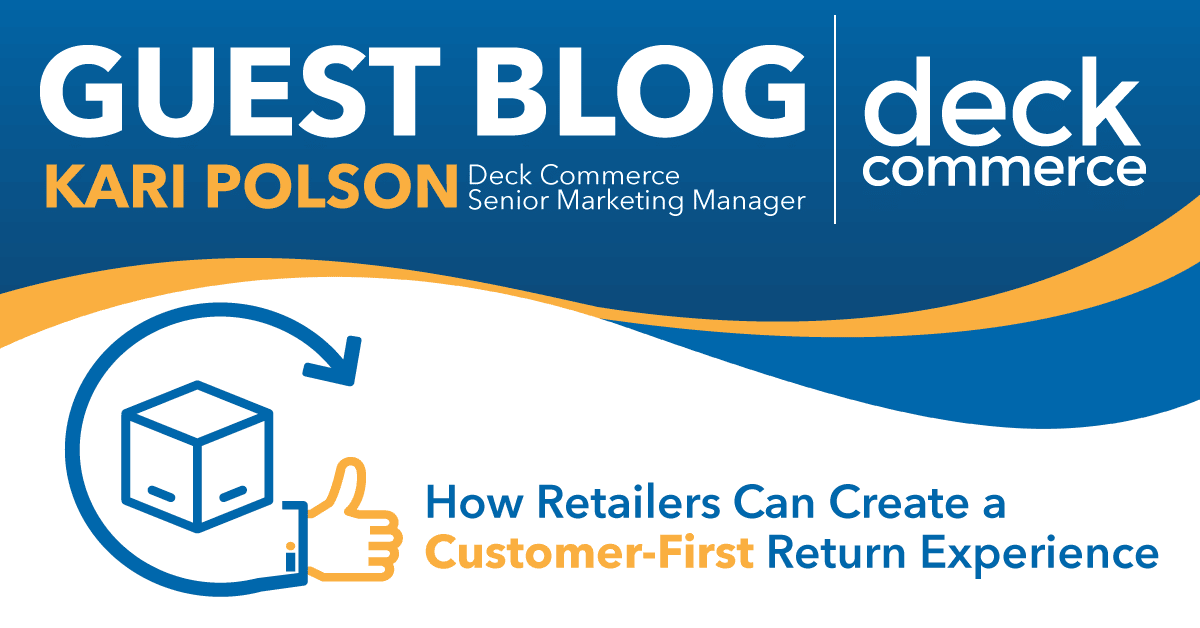By Kari Polson | Sr. Marketing Manager, Deck Commerce
This holiday season was one for the record books. Even with retailers expanding their deep discount windows (some starting as early as October), traditional holiday retail sales (Nov 1- Dec 24) grew 7.6% year over year. And with that boost in sales, comes the inevitable next step—holiday returns.
According to NRF, consumers are expected to return over $800B in merchandise purchased in 2022. How retailers handle returns can make or break their customer loyalty.
Why it’s important for retailers to have a good return process
In the age of omnichannel, every touchpoint through the order’s lifecycle has an impact on the bottom line. As the frontend shopping experience continues to become more seamless, shoppers expect that experience to translate throughout the entire backend process—from fulfillment and delivery, to returns. Here’s why having an optimized return process is good for retailers:
Turns a predictable liability into a strategic growth opportunity. Retailers with an optimized returns process can take those inevitable returns and make them work for them. For example, brands can track return reasons to determine why people are returning certain items and adjust their product strategy accordingly.
Keeps sales “in-house”. Consider offering incentives for customers who return items, such as store credit or discounts on future purchases, to encourage them to continue shopping with your brand.
Increase sales. Creating a pain-free return experience is critical for building customer loyalty. Letting shoppers return their items how and where they want to is a win-win for everyone. The smoother the process, the more likely they will buy from you again. Plus, the faster a returned item is processed, the faster it can be available to sell again.
Reduce costs. There are a lot of moving pieces when processing a return and there are bound to be errors when done manually. However, brands with the right processes and technology in place can automate up to 98% of the return process (including returning any loyalty rewards points), reducing errors and ensuring inventory levels are always accurate.
5 Ways to Create a Customer-First Return Experience
Payment processing, shipping, and delivery are all important post-purchase touchpoints for your customer experience, but the returns process can be one of the most pivotal moments in a relationship with even your best customers. With the right processes in place, you can make returns a source of retention. Here are five ways to create a customer-first return experience.
- Make the return process simple and easy to understand. This can include providing clear instructions on how to initiate a return, what items are eligible for return, and what the return policy is for each item.
- One brand = one return policy. Shoppers expect the same experience strolling on your retail floor as they do when they are scrolling on their phones—and that includes the return policy. Nothing frustrates shoppers (and your customer service teams) more than disjointed policies. Having one clear return policy across all channels removes friction and helps create repeat customers.
- Offer multiple ways for customers to return their items whether that is providing prepaid shipping labels for mail-in returns or allowing shoppers to return items in the store. Around 62% of shoppers are more likely to make an online purchase if they have the option to return it in-store (BORIS), so being able to provide convenient omnichannel options is critical for optimizing returns.
- Clearly communicate with your customers through regular updates on the status of their return and refund. By automating this returns process, retailers reduce manual errors and ensure their customers are kept up to date every step of the way.
- Embrace human interactions. Sometimes when a customer wants to return an item, they just want to talk to a human, not a chatbot. In fact, 86% of shoppers prefer to speak with a person vs a digital interaction when it comes to customer service issues. A customer-first approach means giving your customer service teams the tools and skills they need to be ready to handle those conversations.
Creating a customer-first return experience is a win-win for both your customers and your business. It takes a process that could be seen as unpleasant and turns it into an experience that keeps your customers coming back again and again.
Kari Polson
Sr Marketing Manager, Deck Commerce
Deck Commerce is a leading direct-to-consumer order management system that automates inventory, transactions, fulfillment, and return workflows – giving retailers the power and efficiency to grow globally and across channels.

